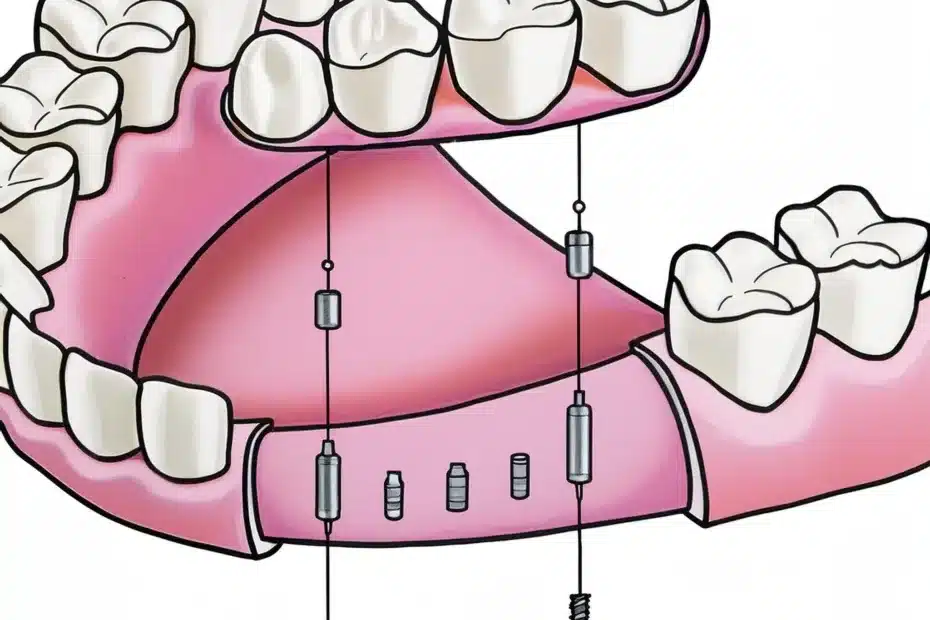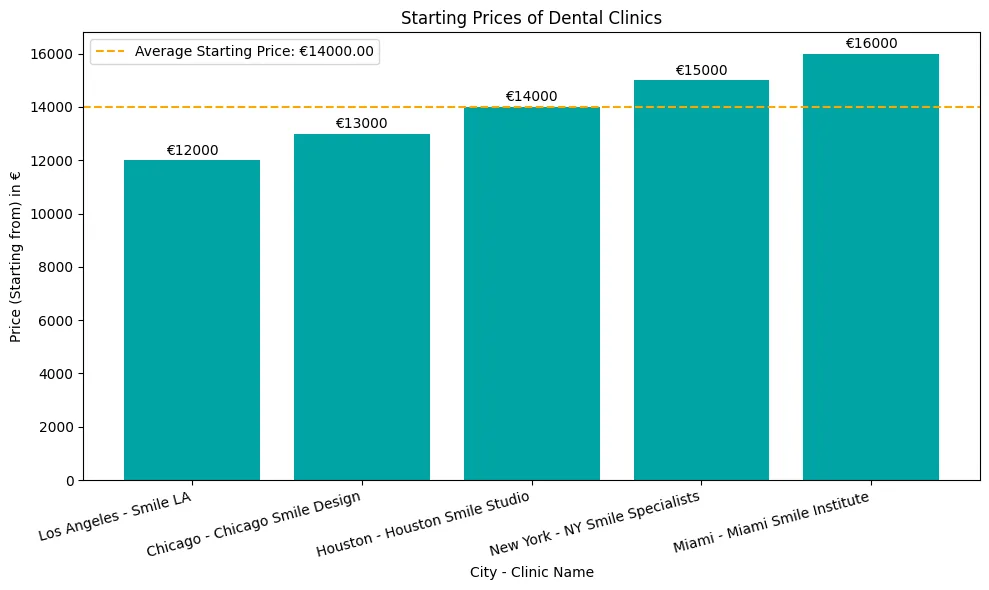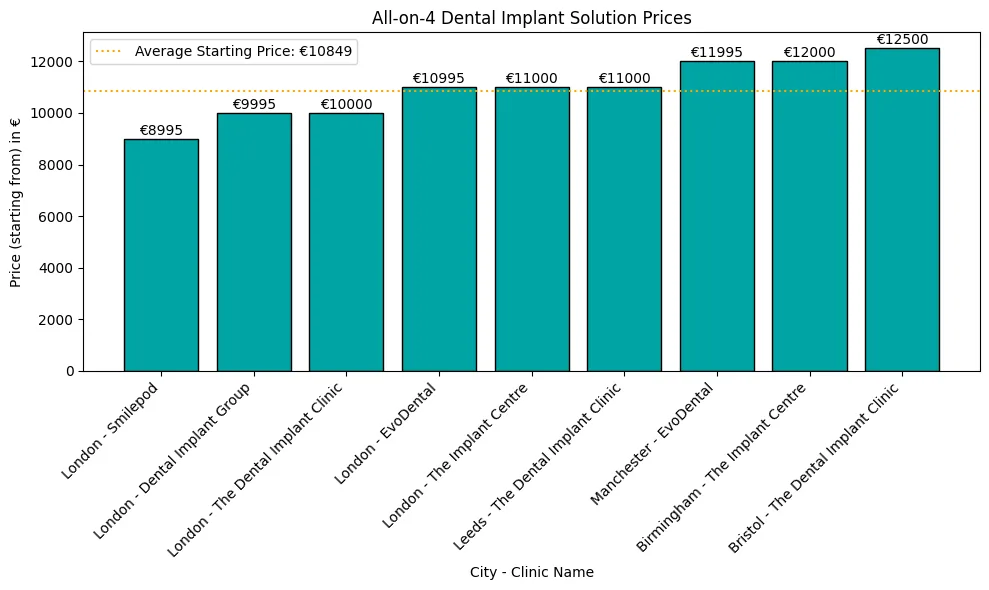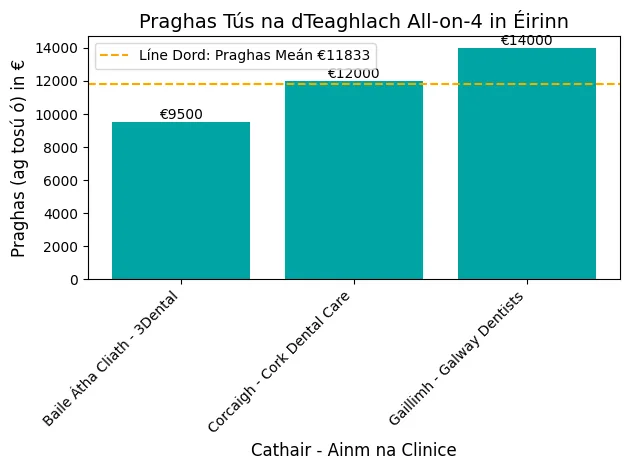Transosteal implantet dentare janë përgjigjja për ata me lartësi të kufizuar të nofullës, të shqetësuar për stabilitetin e implantit dhe suksesin afatgjatë.
Nëse keni kërkuar një zgjidhje të besueshme, ja çfarë duhet të dini.
Çfarë janë implantet dentare transosteale?
Implantet dentare transosteale janë ideale për pacientët me humbje të rëndë të nofullës, duke ofruar një zgjidhje të qëndrueshme ku implantet tradicionale dështojnë. Procedura përfshin sigurimin e një pllake metalike nën kockën e nofullës me vida për të mbështetur një protezë dentare, duke arritur sukses deri në 95% kur kombinohet me shtimin e kockave.
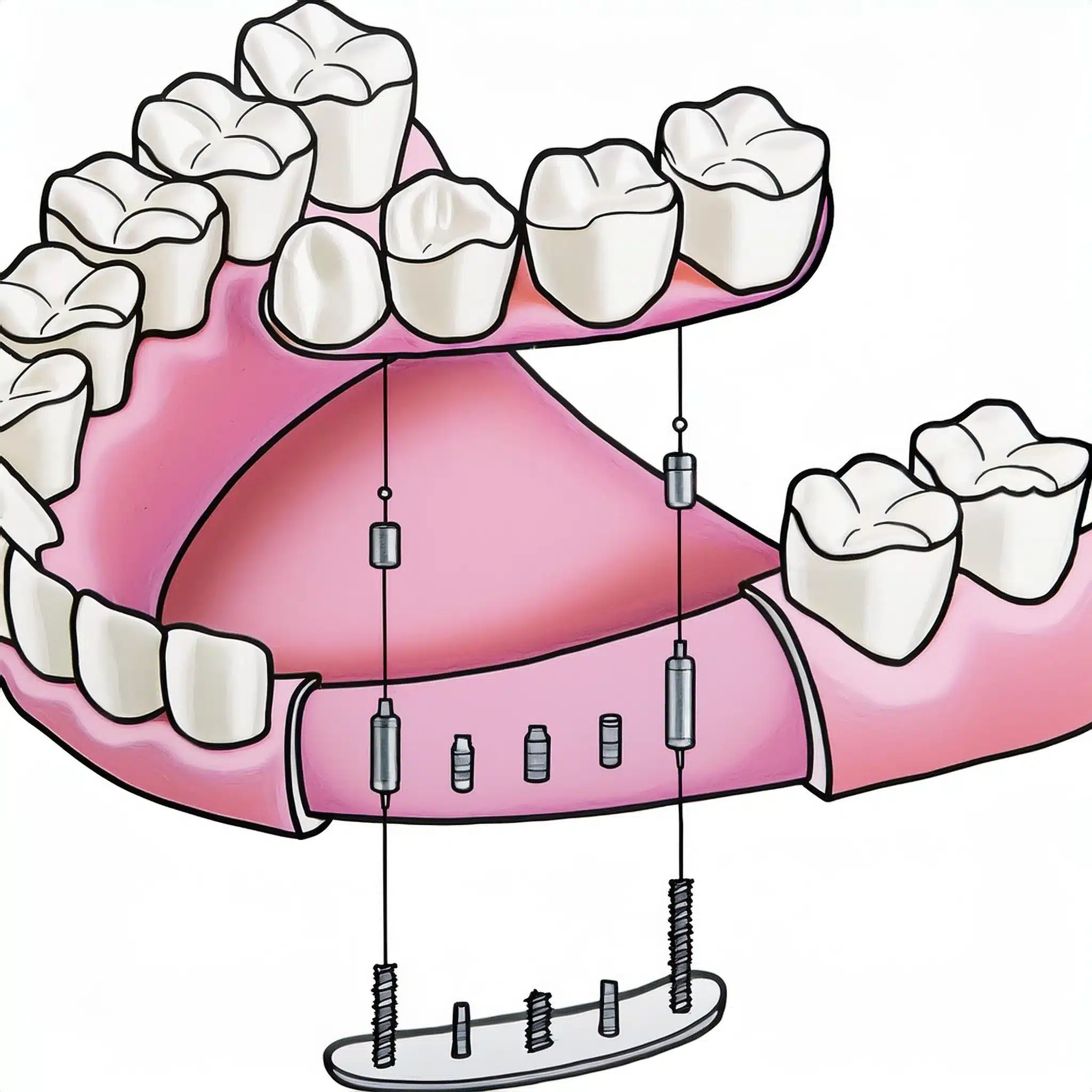
Si funksionojnë implantet dentare transosteale?
Implantet dentare transosteale janë për pacientët me lartësi minimale të kockave të nofullës ku implantet tradicionale nuk mund të përdoren.
Ky seksion do të shpjegojë strukturën e këtyre implanteve dhe operacionin e përfshirë.
Struktura dhe përbërësit e implanteve transosteale
Implantet transosteale kanë një pllakë metalike të fiksuar nën kockën e nofullës.
Nga kjo pllakë, vida ose bulona kalojnë nëpër kockën e nofullës për të ankoruar protezën dentare.
Pllaka metalike siguron një bazë të qëndrueshme, veçanërisht për pacientët me lartësi minimale kockore.
Ndryshe nga implantet endosteale që janë të ngulitura në kockë, implantet transosteale kalojnë nëpër kockë dhe sigurojnë një spirancë të fortë për protezën.
Këto janë ideale për rastet kur rritja e kockave mund të mos jetë e mjaftueshme ose e mundur.
Stabiliteti i strukturës e bën atë të përshtatshëm për pacientët me cilësi të dobët të kockave dhe suksesin e përgjithshëm të procedurës së implantit dentar (1).
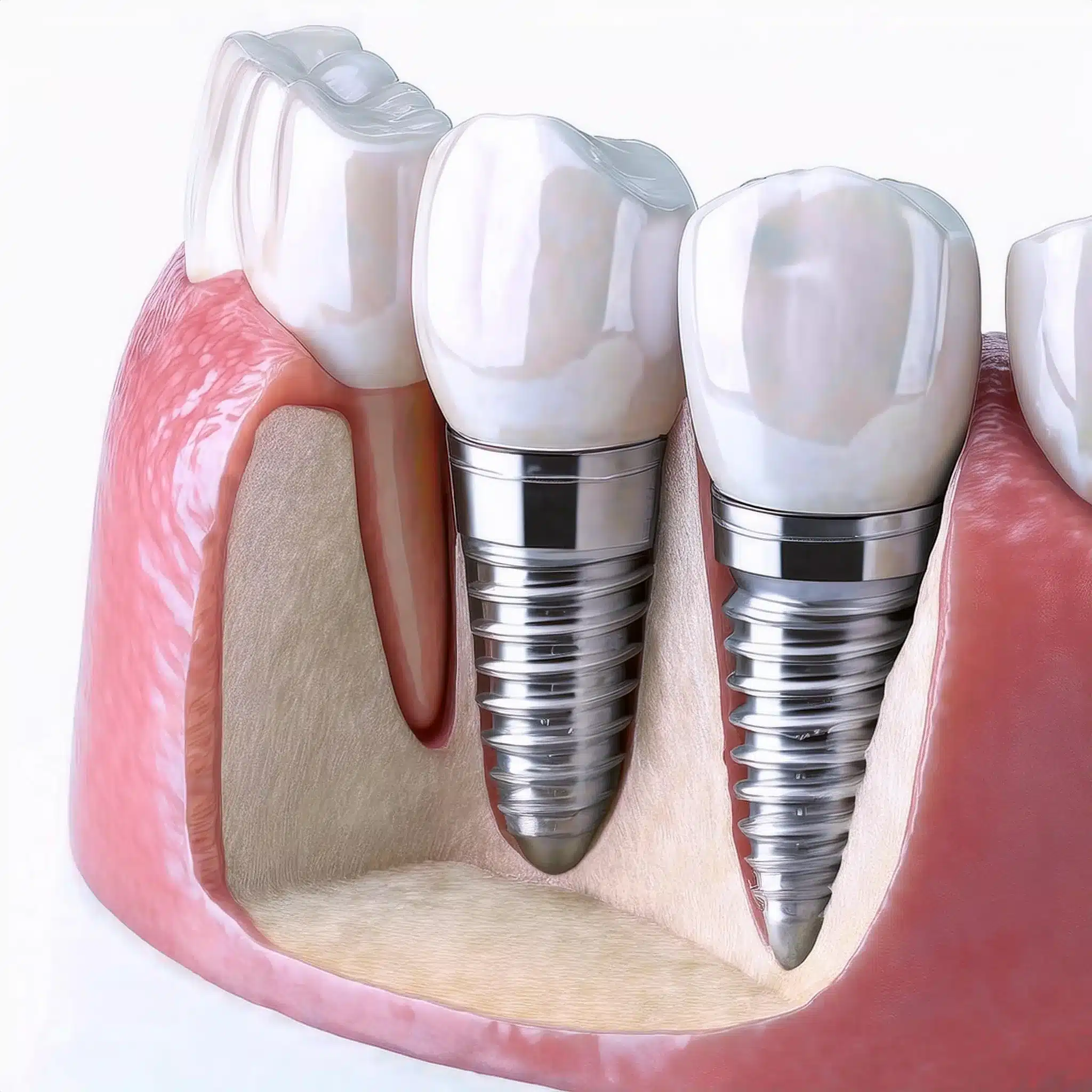
Kirurgji për Implantet Transosteale
Kirurgjia për implantet transosteale është më invazive dhe komplekse në krahasim me mini implante dentare.
Fillon me një prerje përgjatë nofullës për të ekspozuar kockën, ku një pllakë metalike ngjitet direkt në kockë.
Kjo pllakë është bërë zakonisht nga titan biokompatibël dhe shkon poshtë kockës dhe është e siguruar me vida që depërtojnë në kockën e nofullës për të siguruar një bazë të qëndrueshme për protezën.
Meqenëse kjo është një procedurë invazive, shpesh nevojiten teknika të rritjes së kockave për të ofruar mbështetje.
Studimet tregojnë se shkalla e suksesit mund të jetë deri në 95% kur kombinohet me shtimin e kockave (2).
Pacientët që i nënshtrohen këtij operacioni kërkojnë një periudhë më të gjatë rikuperimi, por rezultatet janë më të qëndrueshme dhe më të qëndrueshme se llojet e tjera të implanteve.
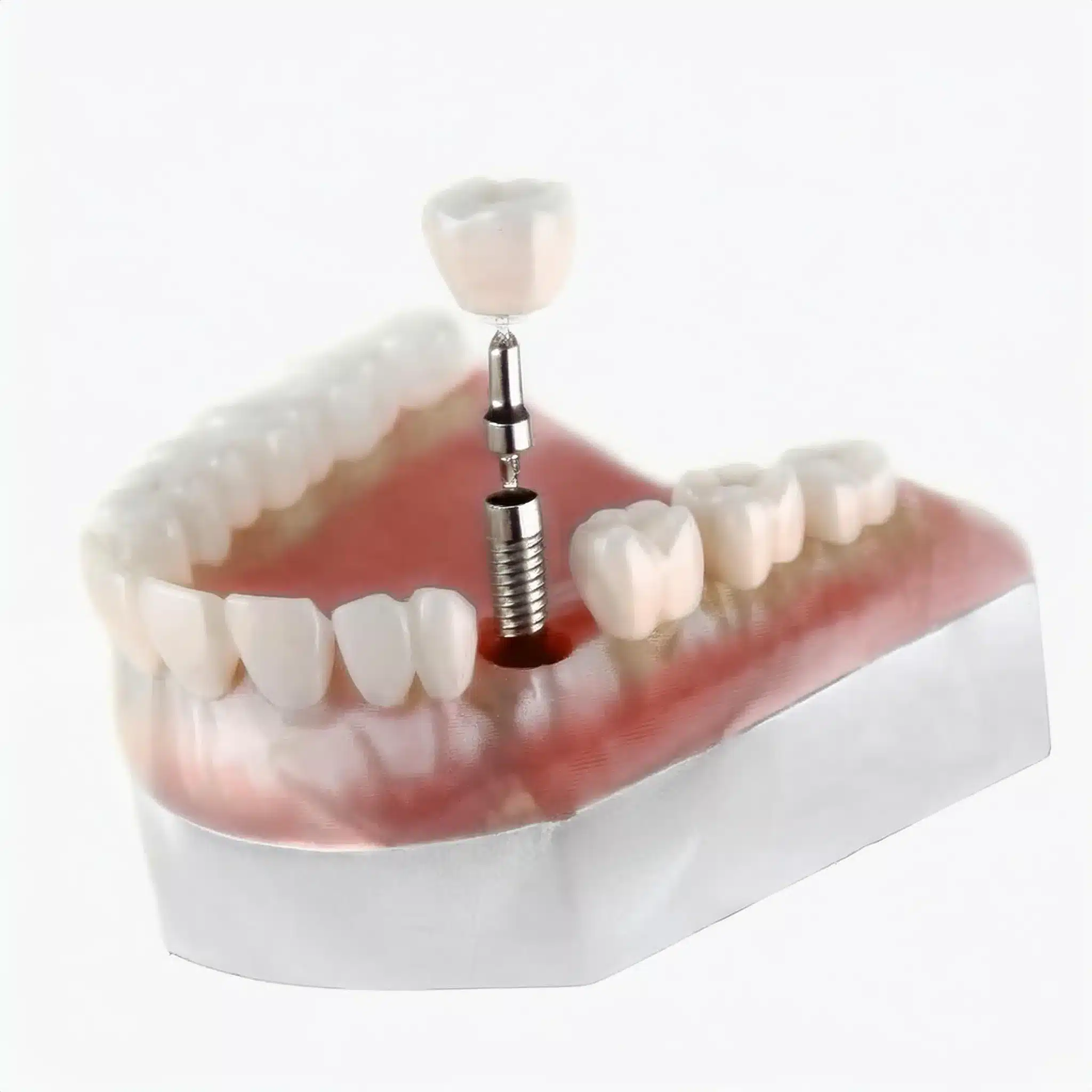
Kur duhet përdorur implantet transosteale?
Implantet dentare transosteale janë një zgjidhje e veçantë për kushte specifike dentare.
Ky seksion do të diskutojë situatat klinike ku këto implante janë më të përshtatshmet dhe të mirat dhe të këqijat.
Situatat klinike për implantet transosteale
Implantet transosteale rekomandohen për pacientët që kanë resorbim ekstrem të kockës së nofullës ose kur lartësia e kockës nuk është e mjaftueshme për të mbështetur llojet e tjera të implanteve.
Këto gjendje shpesh ndodhin te pacientët që kanë qenë pa dhëmbë (pa dhëmbë) për një kohë të gjatë dhe kanë humbje të konsiderueshme të kockave.(3)
Në këto raste, implantet tradicionale endostale nuk mund të përdoren sepse nuk ka kockë të mjaftueshme për të ankoruar implantin.
Për pacientët me humbje të rëndë kockore, veçanërisht në nofullën e poshtme, implantet transosteale janë një opsion i besueshëm, sepse ato nuk mbështeten në lartësinë e kockës për stabilitet.
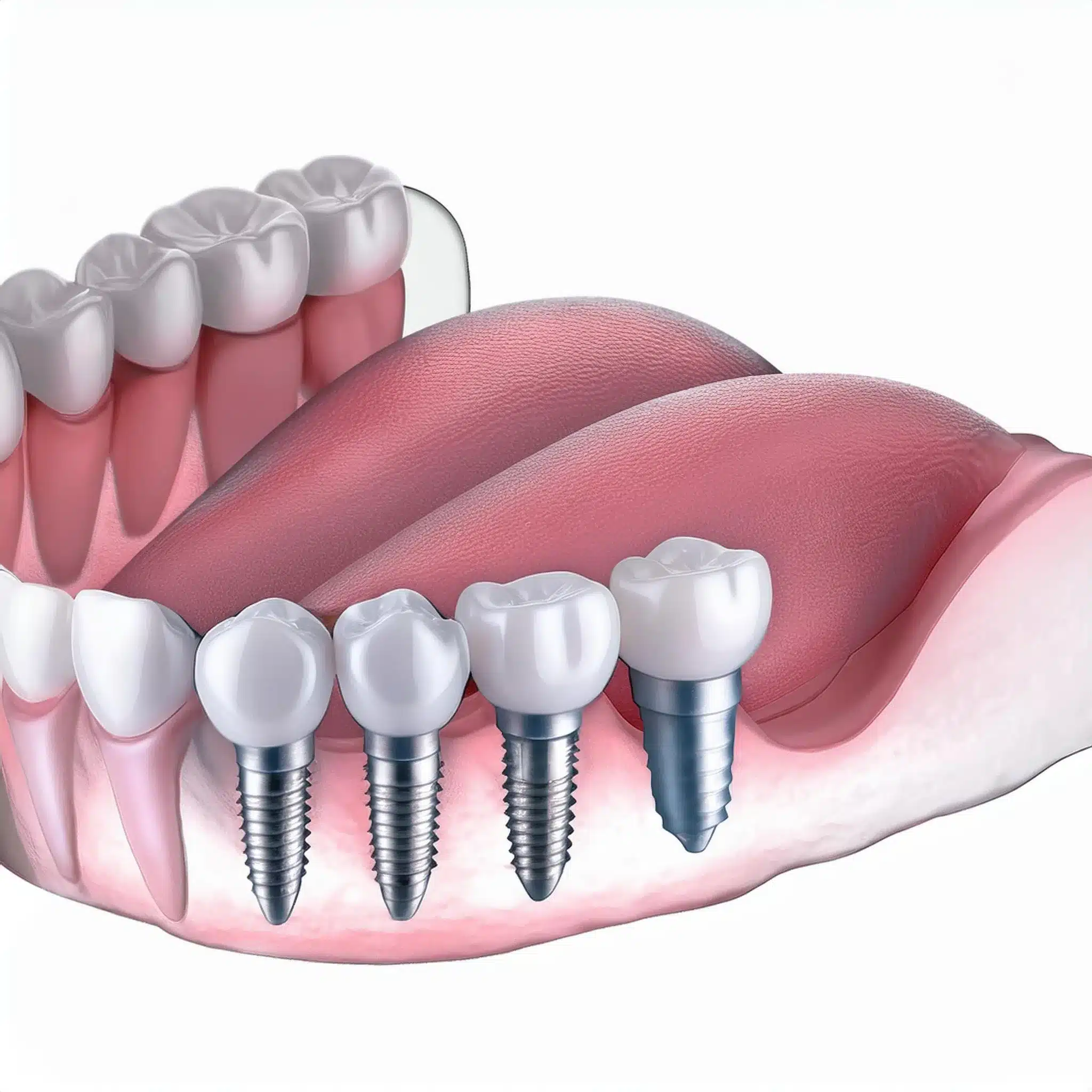
Implantet transosteale kundrejt llojeve të tjera të implanteve
Krahasimi i implanteve transosteale me llojet e tjera të implanteve është i rëndësishëm për të kuptuar avantazhet dhe disavantazhet e tyre.
Ky seksion do të krahasohet me implantet endosteale dhe eposteale.
Implantet Endosteale vs Implantet Transosteale
Dallimet kryesore:
Kërkesat e kockave:
Implantet endosteale kërkojnë lartësi dhe densitet të mjaftueshëm kockor; Implantet transosteale janë të dizajnuara për rastet me humbje të konsiderueshme kockore.Invaziviteti:
Kirurgjia për implantet transosteale është më invazive për shkak të nevojës për të ngjitur pllakën metalike përmes kockës së nofullës; Implantet endosteale janë më pak invazive dhe kërkojnë vetëm shpime në kockë.Aplikimi:
Implantet endosteale përdoren në shumicën e rasteve standarde; implantet transosteale përdoren në raste të rënda të resorbimit të kockave.
Implantet eposteale (nënperiostale) vs implantet transosteale
Dallimet kryesore:
Pozicionimi:
Implantet eposteale ulen në majë të kockës së nofullës; Implantet transosteale depërtojnë përmes kockave, duke siguruar më shumë stabilitet.Invaziviteti:
Implantet eposteale janë një operacion më pak invaziv, më i thjeshtë; implantet transosteale janë më invazive.
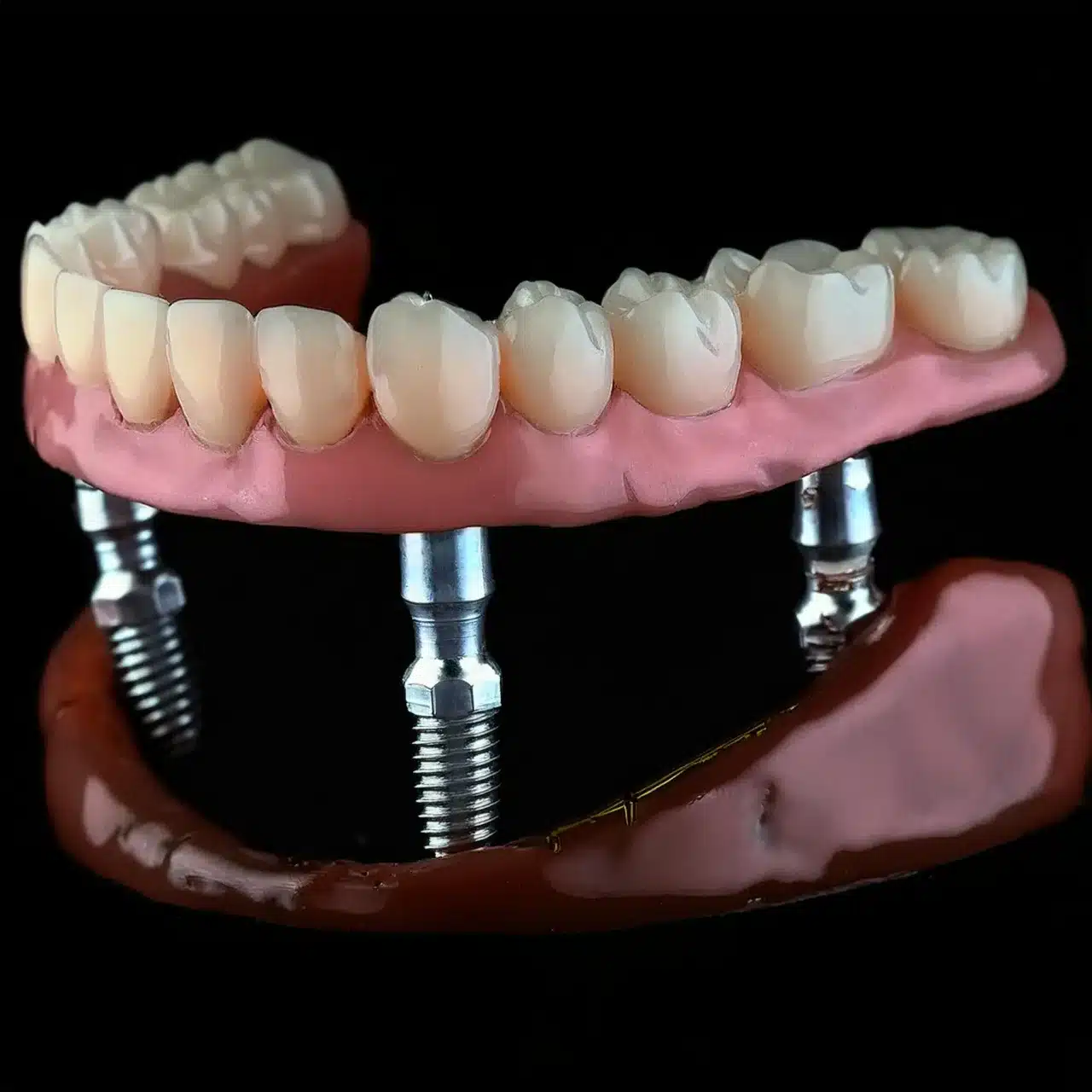
Përfundim & Çështje kryesore
Marrëdhëniet kryesore:
Implantet dentare transosteale janë ideale për pacientët me humbje të konsiderueshme të kockave ose lartësi të ulët të nofullës kur implantet tradicionale nuk janë një opsion.(4)
Procedura përfshin vendosjen e një pllake metalike nën kockën e nofullës, duke e bërë atë më invazive, me kosto më të larta dhe kohë më të gjatë rikuperimi.
Normat e suksesit përmirësohen me shtimin paraprak të kockave, megjithëse ekzistojnë rreziqe si infeksioni, dëmtimi nervor dhe peri-implantiti.
Planifikimi dhe kujdesi i duhur mund t'i minimizojë këto rreziqe.
Kostot ndryshojnë në bazë të kompleksitetit të procedurës, nevojave për shtim të kockave dhe materialeve të implantit, me financim dhe mbulim të pjesshëm të sigurimit potencialisht të disponueshëm.
konkluzioni:
Një implant transosteal është një opsion i fortë dhe i besueshëm për pacientët me mangësi të rënda të kockave të nofullës, një zgjidhje ku implantet e tjera nuk do të funksionojnë.(3)
Duke ditur procedurën, rreziqet dhe koston, pacientët mund të marrin një vendim të informuar dhe të arrijnë një rezultat të suksesshëm me implantet transosteale.

FAQ
Referencat
Duyck J, Naert I. Ndikimi i materialit të protezës në lirimin e vidave të implanteve. Clin Oral Implants Res. 1997; 8 (6): 492-497.
Neni: Ndikimi i materialit të protezës në lirimin e vidave të implanteve
Adell R, Lekholm U, Rockler B, Brånemark PI. Një studim 15-vjeçar i implanteve Osseointegruese në trajtimin e nofullës pa dhëmbë. Int J Oral Surg. 1981; 10 (6): 387-416.
Artikulli: Një studim 15-vjeçar i implanteve të integruara të osteokondrozës në trajtimin e nofullës pa dhëmbë
McDermott NE, Chuang SK, Woo VV, Dodson TB. Komplikimet e implanteve dentare: Identifikimi, frekuenca dhe faktorët e rrezikut të lidhur. Implantet Maxillofac Oral Int J. 2003; 18 (6): 848-855.
Neni: Komplikimet e implanteve dentare: Identifikimi, frekuenca dhe faktorët e rrezikut të lidhur
Esposito M, Grusovin MG, Coulthard P, Worthington HV. Efikasiteti i procedurave të ndryshme të shtimit të kockave për implantet dentare: Një rishikim sistematik Cochrane i sprovave klinike të kontrolluara të rastësishme. Implantet Maxillofac Oral Int J. 2006; 21 (5): 696-710.
Neni: Efikasiteti i procedurave të ndryshme të shtimit të kockave për implantet dentare: Një rishikim sistematik Cochrane i sprovave klinike të kontrolluara të rastësishme

